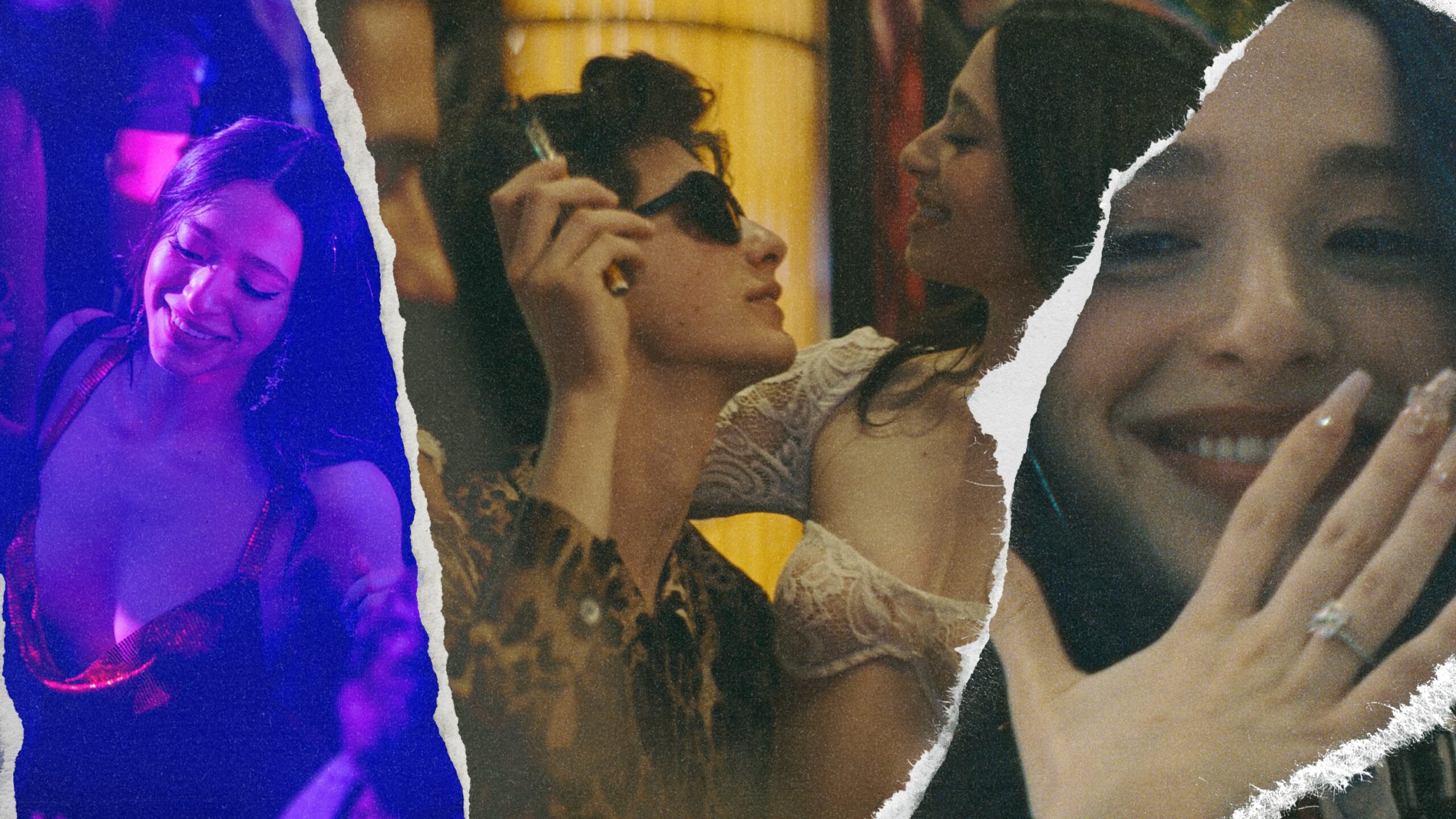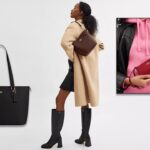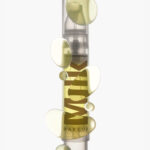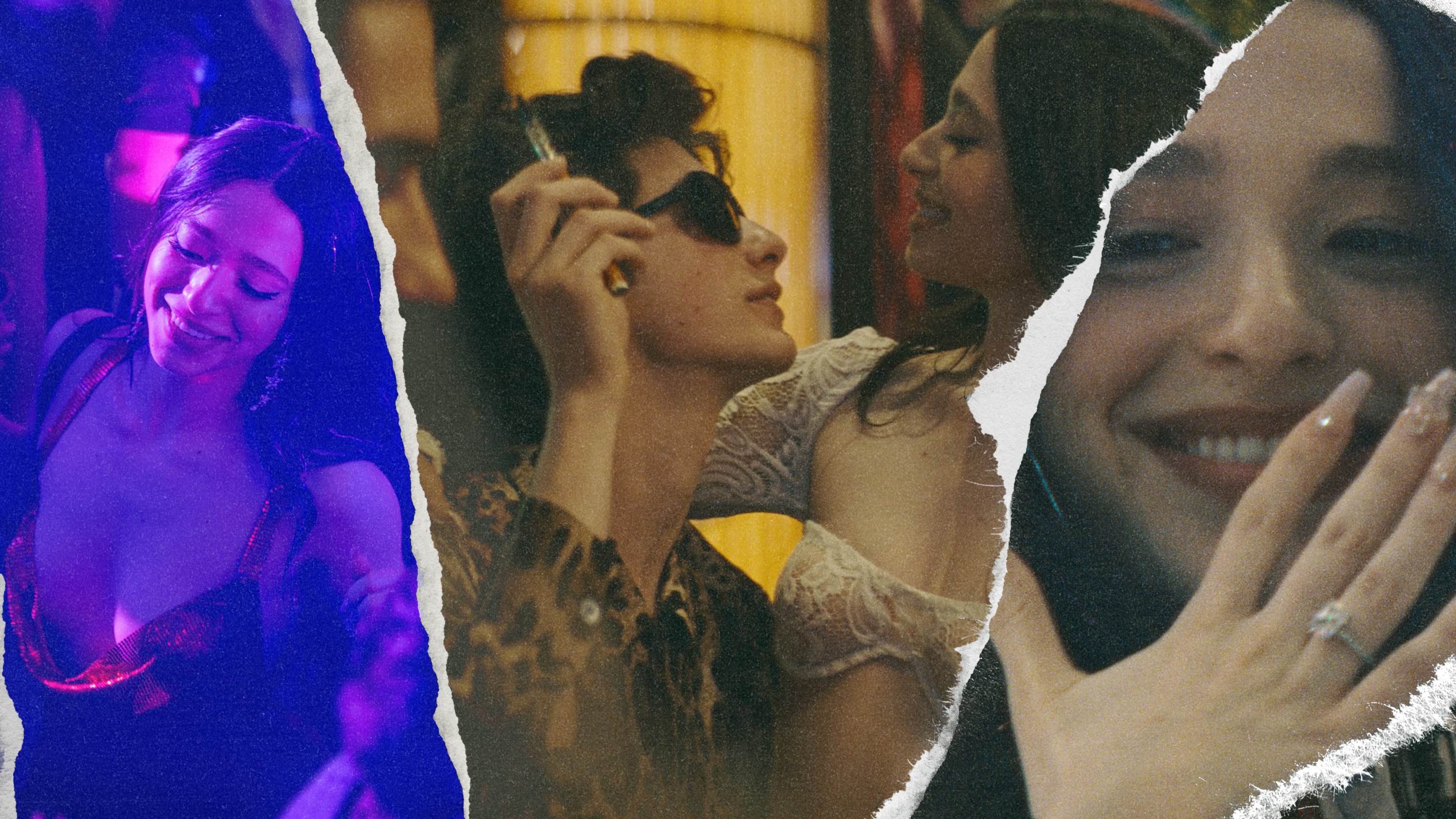 Images: Courtesy of Neon; Adobe. Design: Stephanie Cui / StyleCaster.
Images: Courtesy of Neon; Adobe. Design: Stephanie Cui / StyleCaster.
It’s no secret that director Sean Baker has a knack for storytelling. Whether he’s filming on an iPhone or casting first-time actors to play on-screen versions of themselves, Baker knows how to make his films feel real. It was evident in the raw nature of The Florida Project and Tangerine, and his newest film Anora is no different. While many of his previous films center sex workers, Anora in particular is an ode to dancers and the huge role fashion plays in their lives.
After winning at Cannes and generating tons of box office buzz, Anora is on its way to becoming a quintessential New York City story. The movie—which boasts itself as a modern Cinderella story—follows a dancer named Anora, played by Mikey Madison, whose world is turned upside down when she meets the son of an oligarch named Ivan. And luckily for the film’s costume designer Jocelyn Pierce, Baker deeply understood the importance of fashion in Anora’s world.
Like most of Baker’s films, a lot of research was involved. For Anora, Pierce studied Brighton Beach (where a big part of the film takes place), and the sex worker community to put together the film’s looks. Anora doesn’t skimp on authenticity, and the clothes are proof enough. Because although Anora is a piece of fiction, it acknowledges that there are real life versions of its characters.
this is history pic.twitter.com/R3noOfTgHy
— ً (@mikeymdsn) September 24, 2024
For dancers, Anora is an honest portrayal—which is partly because the background dancers in the film were played by actual dancers. And in addition to acting alongside Mikey Madison, they brought pieces from their own wardrobes for Pierce to pick through. Tiny details like this don’t go unnoticed, especially since sex workers rarely feel accurately portrayed.
Beyond consulting with dancers, Pierce found that styling the characters was a collaborative effort—she called on independent designers, archival collections, and the methodical actors that played them to form the looks. And even though you can’t help but be drawn to Anora’s Russian sable coat or her Herve Leger bandage dress, Pierce finds that the film’s most subtle outfits were often the ones formulated with the most intention.
How did you approach styling Anora?
Working with somebody like Sean [Baker]—he’s so authentic and grounded in the reality of these characters. We started meeting dancers and really doing research on the streets of Brighton Beach, and there was this sort of cultural anthropological dig of like, “Who are the real versions of these people that we’re representing?” And so we took the mood board, and started to ground it in reality. Mikey had so many opinions. When you work with a good actor, it’s like they ultimately know what’s best for their character, and film is such a truly collaborative art form. Mikey did so much research and was truly fully immersed. Her opinions really mattered to us, and that collaboration formed so many of the looks.
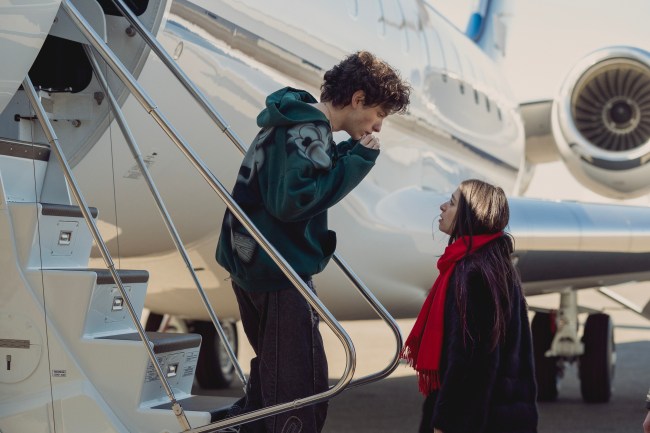 Anora in her fur coat. Photo courtesy of Neon.
Anora in her fur coat. Photo courtesy of Neon.
Do you reference anything in particular for her outfits?
It’s hard to have one answer, because it’s a collage. Like with anybody’s personal style, it’s a collage of influence. I was thinking about it the other day, the themes of “the American dream” color so much of the film. I think, partly by nature, the fact that it’s a New York film, there’s a lot of black and neutrals and metallic. But when it comes to color, we did choose to pop blue and red. And it dawned on me the other day that it’s such a subtle hint to the theme of the the American dream. In the fittings, we were thinking about referencing Pretty Woman a few times, but Sean had never seen Pretty Woman. I mean, maybe that’s changed since then. He was also like, “No, I don’t want to do strong references to other films, this is our own reality.” Yeah, no cheeky nods there.
Fashion plays a huge role in sex work, how did you attempt to convey that in the film?
All of the girls in the club are actual dancers and sex workers, and a lot of them either told us where to go, or they’d bring in their own clothes and let us pull from their own wardrobes. In the theme of Sean being so authentic, he didn’t want movie dancers. He has so much reverence and respect for them, that to be truthful was paramount. A lot of those clothes are their own, and we would sort of choose where to place them. It is such a big part, obviously, of their work. It’s such a fun and playful aesthetic—especially on film, everything is so shiny. It’s so sparkly, it’s super fun. And all of those girls really had their own special sauce and their own identities, and it was nice to let them shine.
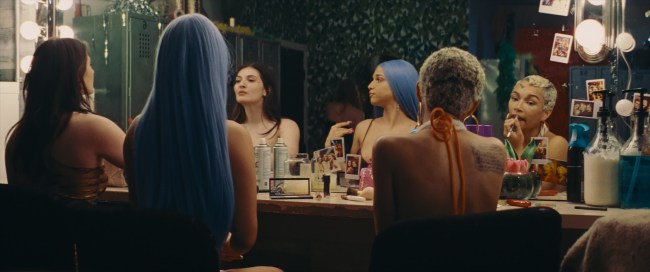 The dancers in Anora. Photo courtesy of Neon.
The dancers in Anora. Photo courtesy of Neon.
One of my favorite moments is when we see Anora on the train wearing normal winter clothes instead of her flashy work clothes. What did you think about when styling those more understated looks?
One of the dancers had said to Sean, “All the girls have Uggs, all the girls leave the club in big, baggy clothes.” There’s a practical aspect to it, and a lot of them were saying that you don’t want to be followed or harassed on your way home. I love that moment too, especially when the film sort of starts with such a bang, and then there’s something so vulnerable about seeing her cozy and tired on the train.
Even though the film is contemporary, the outfits don’t feel super micro-trendy—it feels like Anora has a real sense of personal style. How did you accomplish that?
Oh, that’s so sweet. Thank you. I think we ultimately tried to stick with really classic silhouettes. I think sometimes in film, when you’re doing something that’s so of the moment, something can look so dated or so tired by the time it comes out. I love the dress that Anora wears for her first date with Ivan. It’s that Herve Leger electric baby blue bandage dress. That to me, says so much because it’s such a classic silhouette, and that dress, that designer, it’s so aspirational. We dress for the job we want, you know. We would pull a lot, and then in a fitting, Mikey would sort of play around and could sense what felt right. She was so methodical and deeply in character. Between us, we could find the thing that felt like personal style and felt really grounded in who she was.
What is the significance of the fur coat, did you have a specific picture in your mind when pulling it?
Sean definitely had that in mind. We designed the shape of it, but it was based off of a reference that Sean had sent me of [Female Prisoner Scorpion: Beast Stable] a Japanese film. It’s Russian sable, and in terms of status, you can’t go any higher than that—and he had written that into the script. I love that look, and I love that she’s in it for so long, because there’s something really powerful about that silhouette, especially in those moments where she’s trying to regain control.
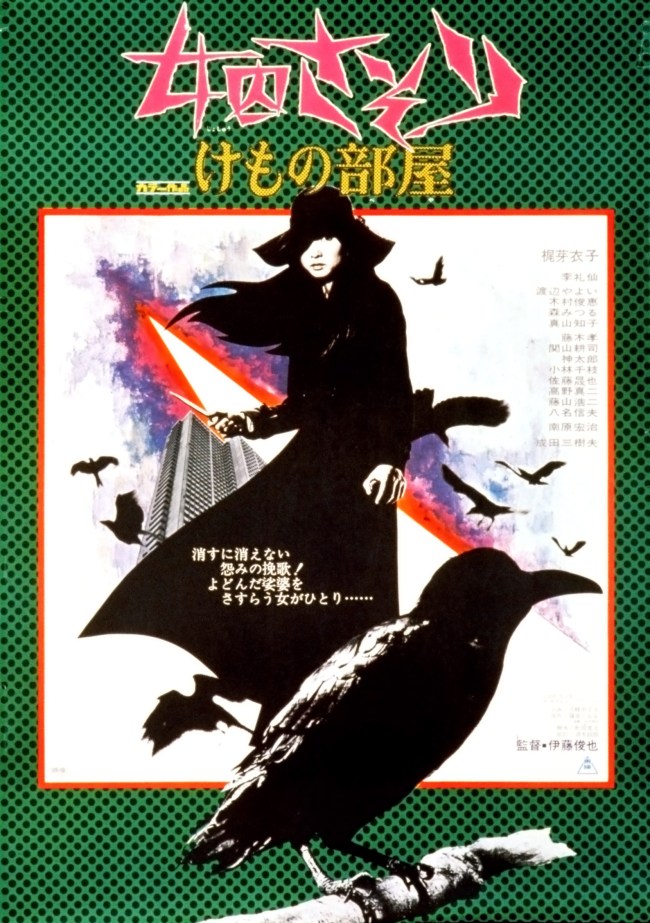 Sean Baker’s inspiration for Anora’s fur coat. Photo courtesy of Everett Collection.
Sean Baker’s inspiration for Anora’s fur coat. Photo courtesy of Everett Collection.
The film is already so well received, how does the recognition feel as the costume designer?
I’m so excited. I can’t believe everybody’s seeing this film. Of course they are, you know, it’s Sean Baker. But I’ve been making indie films for like 15 years, and so often you put your heart and soul into something, and not many people see it. Sometimes making a film that’s grounded in reality is a lot harder than making a film that’s period or fantastical or highly stylized, because it’s all in the tiny details of nuance. It might not look like much to the naked eye, but there are all of these little personal decisions and conversations that create such a beautiful collage.
I liked how Anora wore jean shorts when she eloped, was that a conscious decision to show how spur of the moment it was?
It was. We auditioned a few looks, and some of them had a clear wedding stamp on them, like white lace, or a white dress. And then we were like, “This happens so spur of the moment, it has to be something from her suitcase.” We had this cream bustier top and I don’t remember who had the idea, but we were just like, “What if she wore it with cutoff jean shorts?” And it was, like the sexiest, coolest vibe. It’s so simple, but it made so much sense. It just felt so in line with Anora and it also had that edge that Mikey has. I love Mark [Eydelshteyn] in that scene too, because he’s wearing a custom printed blazer and basketball shorts. To me, it felt like a perfect representation of his character. He can afford these luxury, custom pieces of art, but at the end of the day, he’s still a kid.
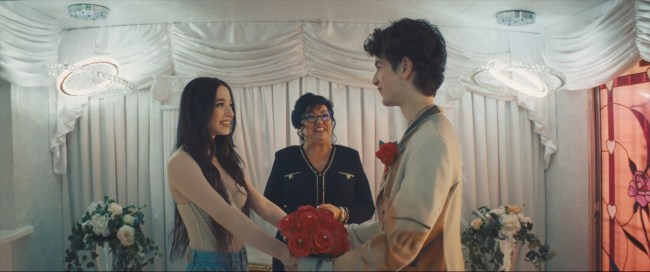 Anora’s wedding look. Photo courtesy of Neon.
Anora’s wedding look. Photo courtesy of Neon.
Besides Anora, are there any characters that you really enjoyed costuming?
Igor wears the same look throughout the entire movie, and it’s really sort of basic. He’s in track pants, a hoodie, and sneakers—it seems so plain, but it was so thought out. Yura [Borisov] is so methodical. We kept seeing guys on Coney Island that were wearing that same outfit. We were like, “This is so real,” because we initially tried to take a bigger swing with him. There was so much evidence of that being a sort of uniform for a typical guy in that neighborhood. After the first day of fittings, when we decided on his look, he asked if he could wear his costume home, and he wore it everyday. He wore it to work, he wore it from work, he wore it on the weekends. He lived in it, and he aged it down. He even made his own little holes in the jacket. He literally lived in it, and it became a second skin. There’s something about that costume that hits me in the gut. Sometimes with costume design, it’s not the big fashion moment, it’s not the wow moment—it’s the human in it, and that was so beautiful to witness. Someone turned something that was sweatpants and a puffer coat into a soul. It was so gorgeous.
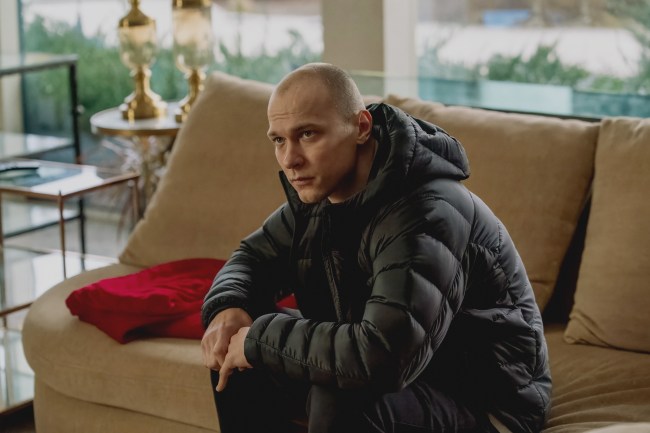 Yura Borisov as Igor. Photo courtesy of Neon.
Yura Borisov as Igor. Photo courtesy of Neon.
What is your favorite look from the film?
You know, there’s a few heartbreaks, because we shot so much in Vegas, and a lot of it got cut. Some of my favorite looks never made the film. As they say, kill your darlings. We worked with a lot of independent designers and a lot of small New York brands and artists. We worked with Gabriel Held Vintage in Brooklyn, whose archive is absolutely stunning. We rented that white lace two piece set that Anora wears, that might be my favorite—just personally, I wish I could walk around in that. It’s hard to have a favorite, because I fell in love with so many moments.
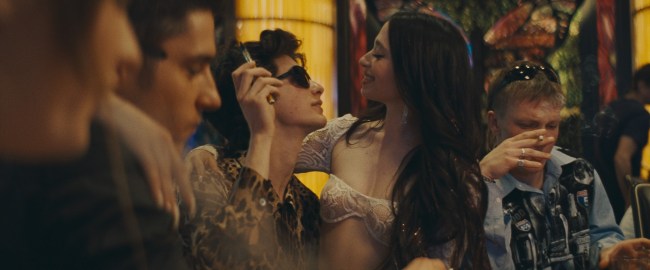 Anora in the two piece lace set. Photo courtesy of Neon.
Anora in the two piece lace set. Photo courtesy of Neon.
What did you hope to accomplish as the film’s costume designer?
Using your community, like young artists and independent designers, is so special because it’s not fast fashion. The beautiful support that we had from so many of these artists, and how so many people were willing to collaborate and make us custom things. We always said, “Let’s keep it as independent, archival, and New York as possible.” Keeping it real was super important. That’s what I always try to drive home. Independent, archival, and New York.
